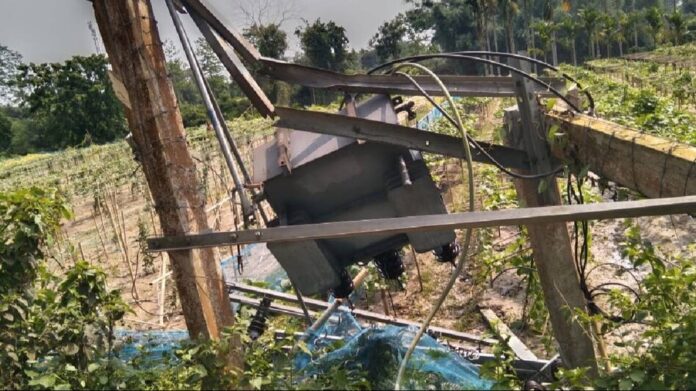Severe weather conditions struck Tripura on May 2, wreaking havoc on the state’s power infrastructure and leaving a trail of destruction in its wake. Preliminary assessments reveal that the thunderstorm caused significant damage amounting to Rs 1.22 crores, posing a considerable challenge to the local authorities.
The impact of the storm is evident in the widespread destruction it has caused to essential components of the power network. Across Tripura, a total of 166 kilometers of transmission lines have been damaged, along with 235 electric poles and 30 transformers. These critical elements of the power infrastructure play a vital role in ensuring uninterrupted electricity supply to residential, commercial, and industrial areas.
In response to the crisis, restoration efforts are already underway, with authorities mobilizing resources to address the extensive damage inflicted by the storm. Repair teams have been deployed to assess the extent of the destruction and initiate necessary repairs and replacements to restore power services to affected areas.
The restoration process is expected to be a challenging endeavor, given the scale of damage and the complexity of repairs required. However, authorities remain committed to expediting the restoration efforts to minimize disruptions to the daily lives of residents and businesses in Tripura.
The aftermath of the storm serves as a stark reminder of the vulnerability of essential infrastructure to natural disasters and the importance of preparedness and resilience measures. As climate change continues to exacerbate extreme weather events, ensuring the robustness of critical infrastructure becomes increasingly imperative to mitigate the impact of such incidents.
Furthermore, the incident underscores the need for continued investments in infrastructure resilience and disaster risk management strategies. By adopting proactive measures and implementing robust infrastructure standards, authorities can enhance the resilience of vital systems and minimize the socio-economic consequences of natural disasters.
As the restoration efforts progress, authorities urge residents to exercise caution and patience while the repairs are underway. Additionally, they emphasize the importance of community support and cooperation in facilitating a swift recovery from the aftermath of the storm.
In the face of adversity, Tripura remains resilient, with efforts underway to rebuild and restore the power infrastructure to its full functionality. Through concerted action and collective resilience, the state aims to overcome the challenges posed by the recent storm and emerge stronger in its aftermath.




